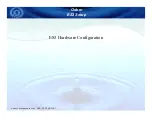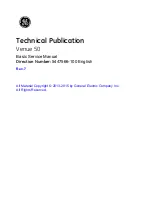
72
Chapter 4, Safety and Patient Care Precautions
P/N 120745-IE, Manual revision: AA
Haemonetics
®
Cell Saver
®
Elite
®
User Manual
Contraindications
for Use
Warning: The use of reinfused blood from the Cell Saver Elite device may be
contraindicated, for example, in the case of sepsis or malignancy. The
responsibility for the use of this device belongs solely to the physician in
charge.
Warning: The Cell Saver Elite device is not intended to be used for chest
(pleural or mediastinal) wound drainage.
The risk/benefit ratio of blood salvage must be determined on an individual
basis by the surgeons, anesthesiologists and transfusion medicine specialists
involved in the patient’s care. Follow the guidelines for general autotransfusion
contraindications per the AABB
Guidelines for Blood Recovery and Reinfusion
in Surgery and Trauma
.
Using
Anticoagulants
Anticoagulant solutions are added to salvaged blood to keep it from clotting.
Different anticoagulants affect the clotting process in different ways.
The most common anticoagulant solution is 30,000 units of heparin in 1L
of normal saline. This should be delivered at a 1:7 ratio of heparinized
saline to blood entering the reservoir by adjusting the roller clamp on the
anticoagulant line.
Citrate solution can also be used as an anticoagulant solution. A general
guide for citrate solution delivery is a ratio between 1:5 and 1:10
anticoagulant to blood.
The rate for both anticoagulants should be set to give approximately 15 mL of
anticoagulant for each 100 mL of blood collected. This equates to a drip rate of
1-2 drops per second, depending on the rate of blood collection.
Note: Recommendations for the use of anticoagulant solution presented in this
manual are intended for use as guidelines only and should not substitute for
the user’s clinical judgment. For hypercoagulable patients, the user may find it
necessary to increase the anticoagulant dosage to prevent clotting.
















































